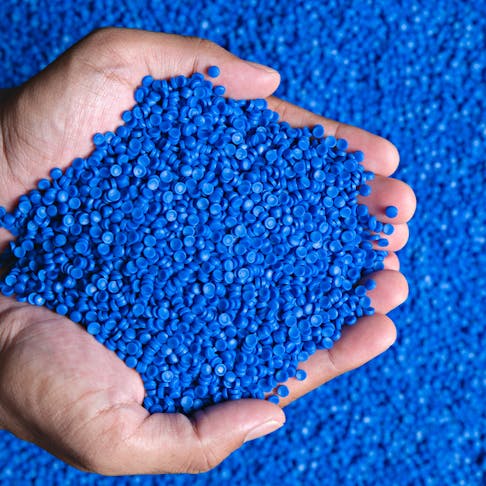Polymers in Construction: Stronger, Lighter, and More Durable
Polymers in Construction: Stronger, Lighter, and More Durable
Blog Article
Making The Most Of the Potential of Polymers: Discover the Multifaceted Advantages and Practical Uses
In the vast landscape of product scientific research, polymers stand out as functional substances that have actually permeated virtually every aspect of modern-day life. Their application covers various markets, from manufacturing and building and construction to health care and modern technology. The diverse advantages and functional uses of polymers remain to evolve, using innovative remedies to complicated obstacles. By checking out just how polymers can enhance item sturdiness, drive sustainability campaigns, transform medical care services, and lead the way for future technical innovations, we can reveal a world of possibilities waiting to be used.
Value of Polymers in Modern Industries
Polymers play an essential duty in modern-day industries, functioning as functional products that drive development and performance across a broad variety of markets. These intricate particles, made up of duplicated subunits, have reinvented markets such as vehicle, aerospace, electronic devices, medical care, and extra. In the automobile sector, polymers have enabled the development of lightweight yet durable components, enhancing gas performance and total efficiency. Aerospace industries count on polymers for their high strength-to-weight proportion, crucial for airplane and spacecraft construction. The electronic devices sector advantages from the protecting residential or commercial properties of polymers, important for manufacturing circuit card and electronic devices (Polymers). In addition, polymers are thoroughly utilized in the healthcare market for drug distribution systems, medical devices, and biocompatible materials. Their adaptability, toughness, and cost-effectiveness make polymers crucial in modern-day manufacturing procedures, promoting developments and driving progress in numerous markets worldwide. Accepting the potential of polymers is vital to unlocking further advancements and dealing with the advancing requirements of today's industrial landscape.
Enhancing Item Resilience With Polymers
With a concentrate on longevity and durability, incorporating advanced polymer innovations right into item design has come to be a keystone of enhancing toughness in modern manufacturing processes. Polymers use a wide variety of buildings that add to the general durability of products. One essential advantage is their resistance to rust, chemicals, and weathering, making them excellent for use in various industries where exposure to rough problems prevails.
Moreover, polymers can be tailored to satisfy particular sturdiness demands, allowing producers to personalize products according to their intended use and anticipated life-span. By including polymers right into item components, manufacturers can enhance strength and effect resistance, minimizing the probability of damage or use gradually.
Furthermore, polymers are lightweight yet sturdy, supplying resilience without adding unnecessary weight to products. This particular is specifically beneficial in sectors such as aerospace and vehicle, where lightweight materials are vital for improving fuel efficiency and total efficiency.
Sustainability Developments Through Polymer Innovation
In the world of contemporary manufacturing and item layout, the ingenious application of polymers is driving significant innovations in sustainability methods. Polymer development plays an essential duty in improving sustainability by supplying remedies that lower ecological impact throughout different sectors. One crucial aspect where polymers stand out remains in allowing the development of light-weight yet durable products that contribute to sustain efficiency in transportation and reduce general energy usage. In addition, the recyclability and biodegradability of specific polymers better promote lasting methods by lessening waste and contamination.
Additionally, advancements in polymer technology have actually brought about the creation of bio-based and sustainable polymers, originated from natural sources you can try these out such as plants, that use an even more lasting alternative to conventional petroleum-based plastics. These environmentally friendly polymers not only help in reducing dependence on nonrenewable fuel sources but also reduce greenhouse gas discharges throughout manufacturing. By integrating these innovative polymers into producing processes, business can minimize their ecological impact and move towards even more sustainable methods, lining up with worldwide efforts to deal with climate modification and advertise a round economy.
Polymers in Healthcare: Revolutionizing Medical Solutions

Among the essential areas where polymers are making significant strides remains in the growth of targeted medication delivery systems. By encapsulating drugs within polymeric nanoparticles or micelles, scientists can enhance drug security, improve bioavailability, and make it possible for controlled release, resulting in much more efficient therapy regimens with lowered side effects.
In addition, polymers are instrumental in the area of regenerative medication, where they are used to develop scaffolds that resemble the extracellular matrix, giving assistance for cell growth and cells regrowth. This technology holds tremendous pledge for repairing harmed organs, advertising wound recovery, and advancing customized medication methods.
Essentially, the combination of polymers in healthcare is driving technology, improving treatment effectiveness, and ultimately improving patient results in means previously assumed unattainable.
Future Applications and Developments in Polymer Modern Technology
Progressing at the a knockout post leading edge of clinical exploration, polymer innovation remains to lead the way for groundbreaking applications and technologies shaping diverse sectors. In the realm of lasting product packaging, naturally degradable polymers are getting grip as eco-friendly choices to traditional plastics. These polymers damage down naturally, decreasing the ecological influence of single-use items. In the field of electronic devices, conductive polymers are changing wearable technology and flexible electronics. Their special residential properties permit the advancement of elastic circuits and sensing units, making it possible for new possibilities in medical care tracking and clever clothes. Furthermore, polymer nanocomposites are enhancing the mechanical and thermal residential properties of products, bring about more powerful and lighter components in aerospace and automobile industries. Looking in advance, scientists are discovering the possibility of shape-memory polymers for applications in robotics and biomedical gadgets, where products that can "keep in mind" and return to their original shapes offer exciting possibilities for development. As polymer innovation remains to evolve, the future holds endless opportunities for groundbreaking innovations throughout different industries.
Final Thought

Report this page